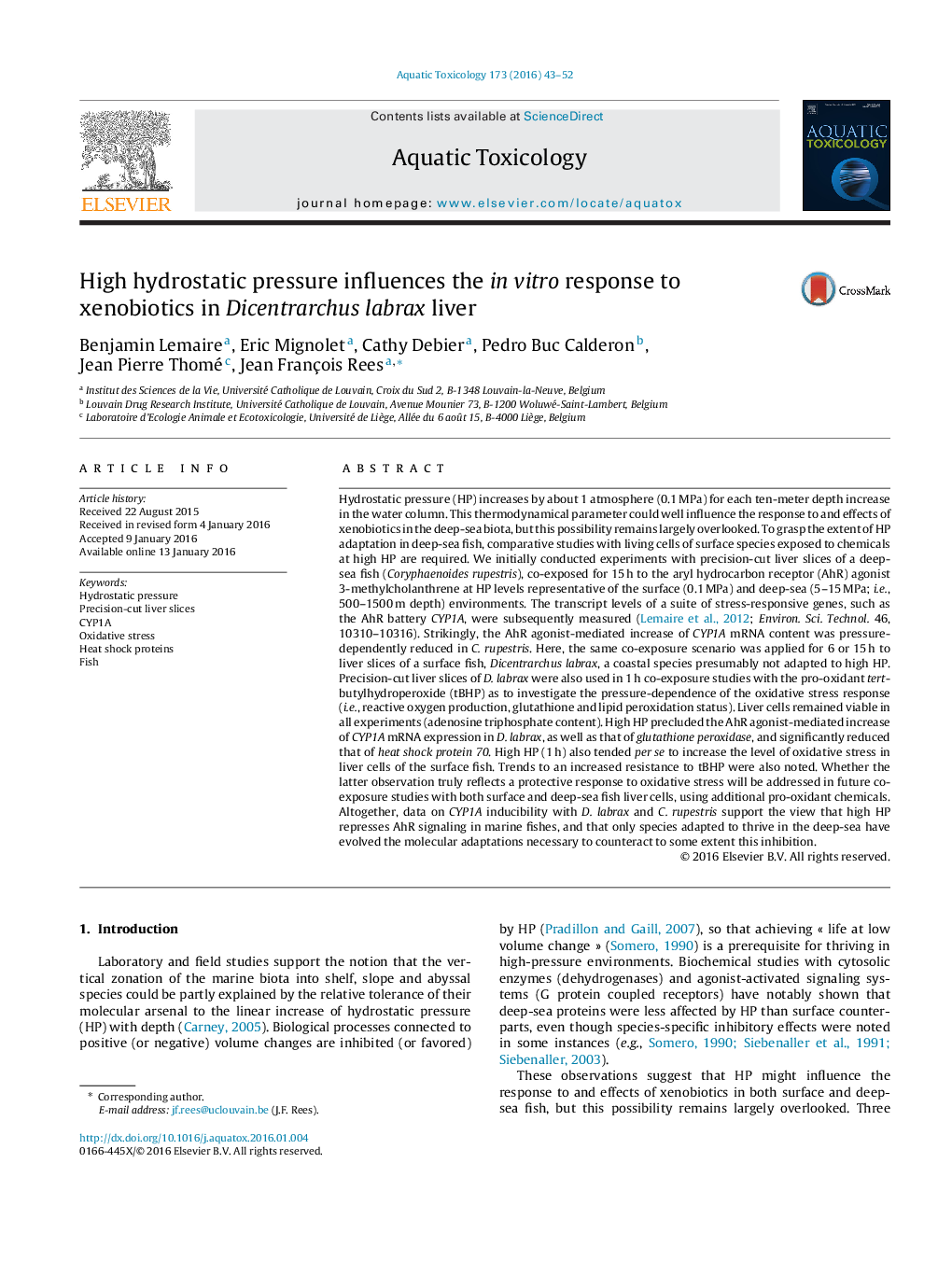| کد مقاله | کد نشریه | سال انتشار | مقاله انگلیسی | نسخه تمام متن |
|---|---|---|---|---|
| 4528865 | 1625932 | 2016 | 10 صفحه PDF | دانلود رایگان |

• The methodology of precision-cut liver slices was applied to the European seabass.
• Liver slices remained viable and functional in short-term co-exposure studies.
• CYP1A induction was blocked in slices exposed to an AhR agonist at high pressure.
• HSP70 induction was lower in slices exposed to an AhR agonist at high pressure.
• Oxidative stress responses to tBHP were less pronounced at high pressure.
Hydrostatic pressure (HP) increases by about 1 atmosphere (0.1 MPa) for each ten-meter depth increase in the water column. This thermodynamical parameter could well influence the response to and effects of xenobiotics in the deep-sea biota, but this possibility remains largely overlooked. To grasp the extent of HP adaptation in deep-sea fish, comparative studies with living cells of surface species exposed to chemicals at high HP are required. We initially conducted experiments with precision-cut liver slices of a deep-sea fish (Coryphaenoides rupestris), co-exposed for 15 h to the aryl hydrocarbon receptor (AhR) agonist 3-methylcholanthrene at HP levels representative of the surface (0.1 MPa) and deep-sea (5–15 MPa; i.e., 500–1500 m depth) environments. The transcript levels of a suite of stress-responsive genes, such as the AhR battery CYP1A, were subsequently measured ( Lemaire et al., 2012; Environ. Sci. Technol. 46, 10310–10316). Strikingly, the AhR agonist-mediated increase of CYP1A mRNA content was pressure-dependently reduced in C. rupestris. Here, the same co-exposure scenario was applied for 6 or 15 h to liver slices of a surface fish, Dicentrarchus labrax, a coastal species presumably not adapted to high HP. Precision-cut liver slices of D. labrax were also used in 1 h co-exposure studies with the pro-oxidant tert-butylhydroperoxide (tBHP) as to investigate the pressure-dependence of the oxidative stress response (i.e., reactive oxygen production, glutathione and lipid peroxidation status). Liver cells remained viable in all experiments (adenosine triphosphate content). High HP precluded the AhR agonist-mediated increase of CYP1A mRNA expression in D. labrax, as well as that of glutathione peroxidase, and significantly reduced that of heat shock protein 70. High HP (1 h) also tended per se to increase the level of oxidative stress in liver cells of the surface fish. Trends to an increased resistance to tBHP were also noted. Whether the latter observation truly reflects a protective response to oxidative stress will be addressed in future co-exposure studies with both surface and deep-sea fish liver cells, using additional pro-oxidant chemicals. Altogether, data on CYP1A inducibility with D. labrax and C. rupestris support the view that high HP represses AhR signaling in marine fishes, and that only species adapted to thrive in the deep-sea have evolved the molecular adaptations necessary to counteract to some extent this inhibition.
Journal: Aquatic Toxicology - Volume 173, April 2016, Pages 43–52